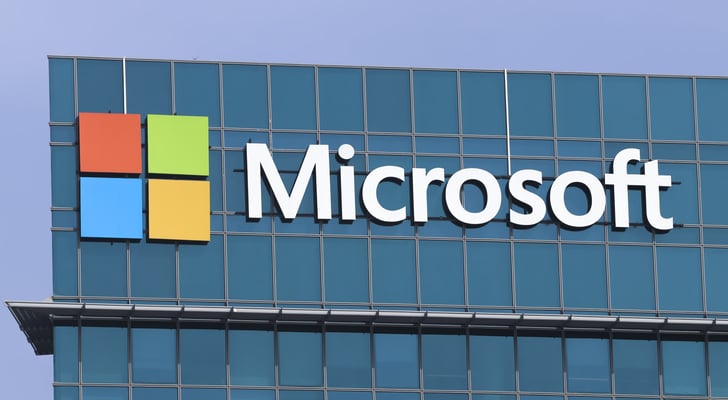Late last year, technology news website The Information opined that Microsoft Corporation (NASDAQ:MSFT) would likely make a big acquisition in 2018. It further named FireEye Inc (NASDAQ:FEYE) as the most plausible target.
Owners of MSFT stock nodded at the compelling prospect but quickly moved on, knowing that only a handful of predicted buyouts ever actually come to fruition.
This is a possibility, however, that MSFT stockholders just might want to keep in their back pocket. There’s some logic to the hypothesis, and the two companies have worked together in the past.
There’s also the not-so-small matter that Microsoft CEO Satya Nadella is slowly but surely falling in love with the idea of cloud-based recurring revenue, which FireEye brings to the table after launching Helix in late 2016.
Similar Business Models
Most investors know Microsoft well enough. It’s still the king of operating systems, with one of its versions of Windows running on a little more than 88% of the world’s desktops and laptops.
Windows isn’t nearly as important as it used to be for the company, however. A great deal of the current and future value of Microsoft stock is linked to cloud computing, and all that MSFT can do for enterprise-level customers on that front. Commercial cloud revenue reached an annualized pace of $20 billion for Microsoft last quarter — much of it recurring — and is still growing well.
The twist is that much of the server-centric and cloud-based services the iconic tech company offers is purchased as a subscription, meaning as long as users remain on board, Nadella more or less knows cash is coming from one quarter to the next.
The same idea is similarly new for FireEye.
FireEye, in simplest terms, provides cybersecurity solutions. Prior to the end of 2016, its sales engine was set up in such a way to promote big-ticket but one-time sales of its software. When Kevin Mandia returned to the helm in mid-2016, though, he had a new vision.
With years’ worth of software acquisitions under the company’s umbrella, and cloud computing becoming the new norm, he sought to aggregate them under one umbrella called Helix, and sell online access to those various pieces of software on a subscription basis.
Other Commonalities
The common business model isn’t the only commonality between the two organizations, however. They’re also both talking to the same target customer.
Yes, Windows is used at home as much as it’s used at the office, and Microsoft’s video gaming arm isn’t aimed at businesses. That’s only a small piece of Microsoft’s pie, however.
Its
Azure platform, which makes interfacing with the cloud a snap, is built from the ground up for enterprise-level users. And there’s no denying last year’s acquisition of LinkedIn was ultimately designed to deepen its relationship with business users.
Adding FireEye’s offering to MSFT’s menu is the next logical step in the development of its business-minded menu, even if it’s only MSFT’s cloud and server customers that will fully appreciate those tools.
And if nothing else, adding to Microsoft’s options helps prevent defections to the server and cloud-computing services offered by Amazon.com, Inc. (NASDAQ:AMZN).
It’s also worth noting that FireEye and Microsoft already have a more modest relationship. In 2016, the two parties teamed up to beef up security on devices running Windows 10. Namely, FireEye’s iSIGHT threat detection tool became accessible through the Windows Defender Advanced Threat Protection (WDATP) platform.
Though it was only a minor addition to the cybersecurity tools available in Windows, it was a mutually beneficial one. Therefore, Microsoft would have a decent idea of what a melding with Mandia’s organization would look like.
In the meantime, clearly the cybersecurity threat continues to grow. FireEye’s top line is expected to grow more than 6% this year and more than 8% next year, spurring a swing to an operating profit in 2019.
Bottom Line for MSFT Stock
The prospect of an acquisition of FireEye is neither a reason by itself to own FireEye or MSFT stock. Most predicted buyouts never actually materialize. This particular possibility, however, holds a little more water than rumored acquisitions do simply because the two could become one with relative ease, and MSFT has been buying security companies already.
The deals to buy Hexadite and Cloudyn are a couple of examples, albeit small ones compared to the $2.8-billion market cap FireEye sports.
It’s certainly nothing to hold your breath waiting on. But, now that you know what to listen for, you might recognize the early warning chatter before any official announcement would be made.
As of this writing, James Brumley did not hold a position in any of the aforementioned securities. You can follow him on Twitter at @jbrumley.

